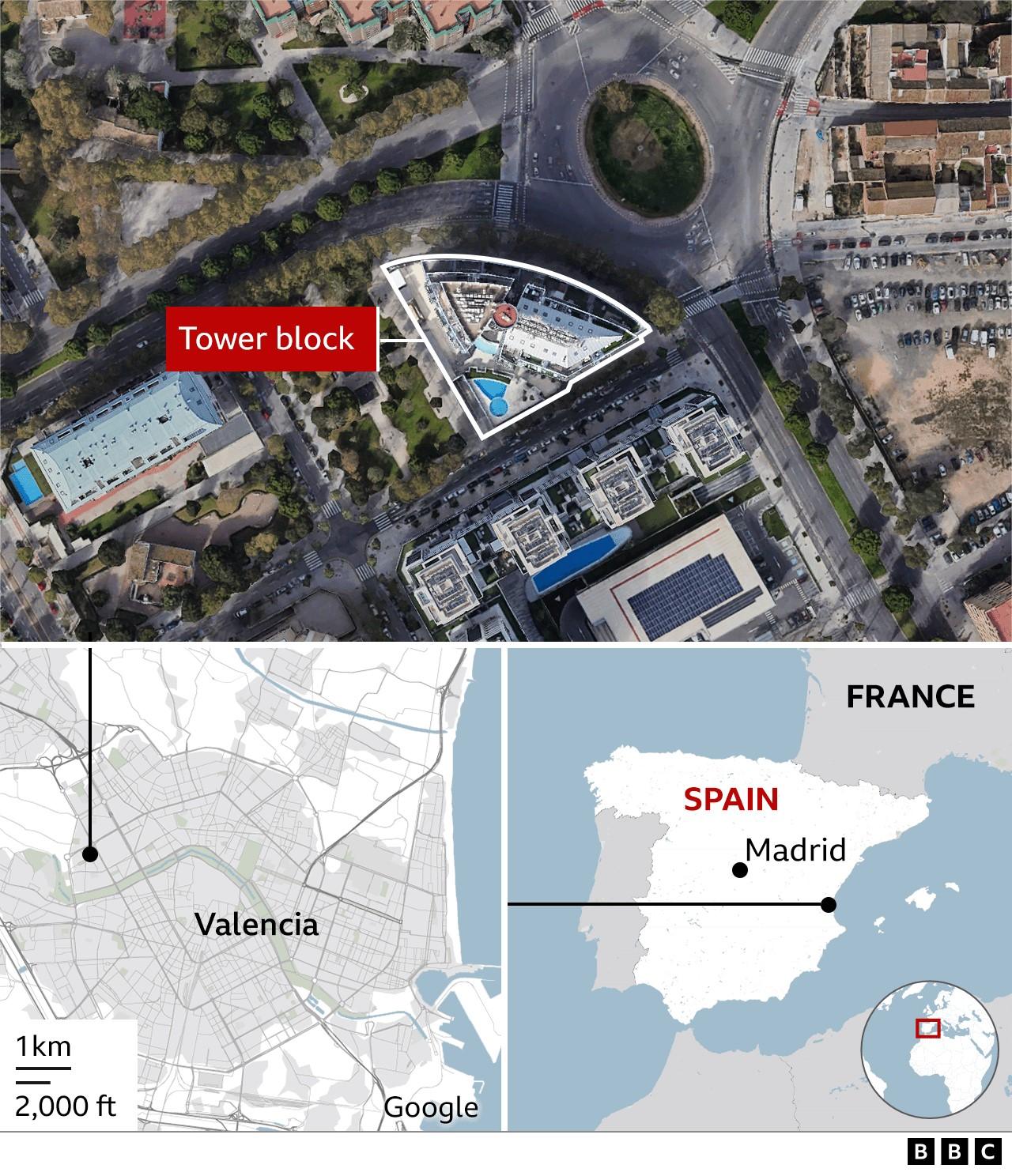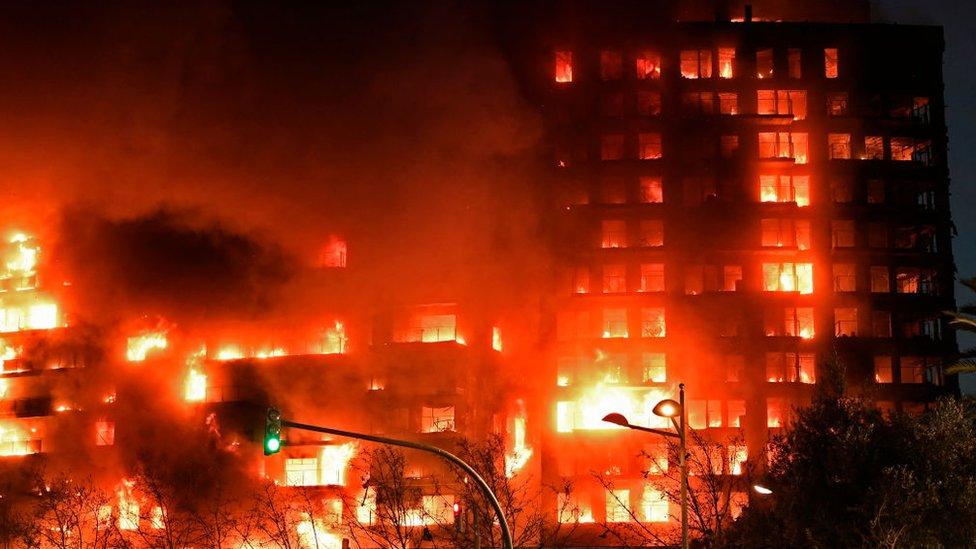What we know so far after Valencia tower block fire
- Published
Watch: Firefighters In the Spanish city rescued some of those trapped, but were unable to save others
Spain is reeling from the news that five people have died and up to 15 people are missing after a fire engulfed a high-rise apartment block in the city of Valencia.
The blaze engulfed a 14-storey building in the Campanar neighbourhood and spread to an adjoining block.
There are already questions being asked as to whether the way the building was constructed could have enabled the fire to spread quickly.
Here's what we know so far.
How did the fire start?
The fire began on Thursday evening on the fourth floor of the building. The cause of the fire is not yet known.
The blaze spread to an adjoining building as high winds fanned the flames.
Firefighters managed to rescue some of the building's residents last night, but so far have only been able to access up to the third floor, due to the high temperatures.
Drones have spent the night and this morning flying over and around the structure to help with the search.
A family of four, including a three-year-old boy and a 15-day-old baby girl, are reportedly among those missing.
Spanish media are calling it the worst fire recorded in Valencia.
Did cladding enable the fire to spread?
Experts have suggested that cladding on the outside of the building could have been a factor in enabling the fire to spread rapidly.
Cladding is added to the facade of modern buildings to keep the weather at bay. Behind the panels there is usually an air space to help insulation and prevent damp.
Esther Puchades, vice president of the College of Industrial Technical Engineers of Valencia, told Spanish news agency Efe she had previously inspected the building.
She said its exterior featured a polyurethane material, which is no longer in wide use because of fears over flammability. It also has an aluminium covering.
"The reason the [building] burned so fast is because of this type of cladding," she told Spanish media.

The cladding has been described by experts as effective for heat insulation but the ventilation, or gap, between it and the covering means it can be highly flammable.
Luis Sendra, of Valencia's architects' association, said this can cause a "chimney effect", allowing fires to spread more quickly.
The specific type of cladding on the buildings in Valencia is still unclear, and some types of cladding are more flammable than others.
A 2007 promotional video by the building's developer mentioned the "innovative material" used to clad the building's exterior, which passed "rigorous quality checks".
The issue of flammable cladding gained prominence in the UK after the 2017 Grenfell Tower disaster, in which 72 people died when a tower block in west London caught fire.
What do we know about building?
The blocks are in the Campanar neighbourhood, one of the most affluent areas of Spain's third biggest city.
Some 450 people are believed to live there, according to Spanish newspaper El Pais.
The building was built in 2008-09 and had 138 apartments, it said.
The developer Fbex began constructing the building in 2005, in the middle of the real estate bubble, but the company filed for bankruptcy five years later, elDiario.es reports.
Pilar Bernabe, the government's representative in Valencia, said it was hard to say how many people were missing because it was "a building with many flats, flats in which there were people of foreign nationality, whose location is more difficult to pinpoint".

Related topics
- Published23 February 2024
